Year 2 Living Things and Their Habitats Daubeney Primary School

Learn about pond habitats and what animals live nearby. Play Galaxy Pugs science game! Year 2 KS1 Science Living things and their habitats learning resources for adults, children, parents and.
LIVING THINGS AND THEIR HABITATS (YEAR 6) Teaching Resources

JPG, 129.77 KB. zip, 30.23 MB. Introducing our comprehensive 6-Lesson Unit on "Living Things and their Habitats". This engaging package is designed to immerse students in the fascinating world of biology, offering a blend of interactive Smart Notebook Whiteboard Slides, captivating activities, and a detailed lesson plan. Key Details:
Living Things and Their Habitats Planning Year 2 Apple For The Teacher Ltd
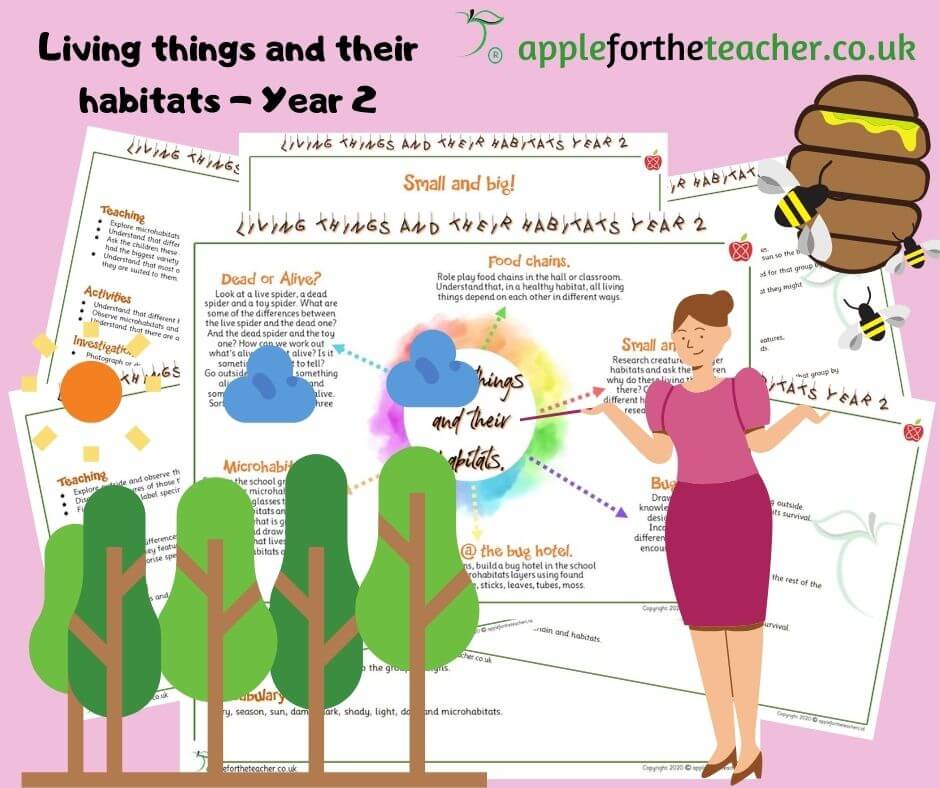
Living Things and their Habitats planning Living Things and their Habitats teaching resources Lesson 1 - Common Characteristics of All Living Things Lesson 2 - Living, Dead and Never Alive Lesson 3 - Food Chains Lesson 4 - Producers, Consumers and Decomposers Lesson 5 - Identifying Mini-beasts Lesson 6 - Data Handling with Mini.
Living Things and Their Habitats Activities Apple For The Teacher Ltd
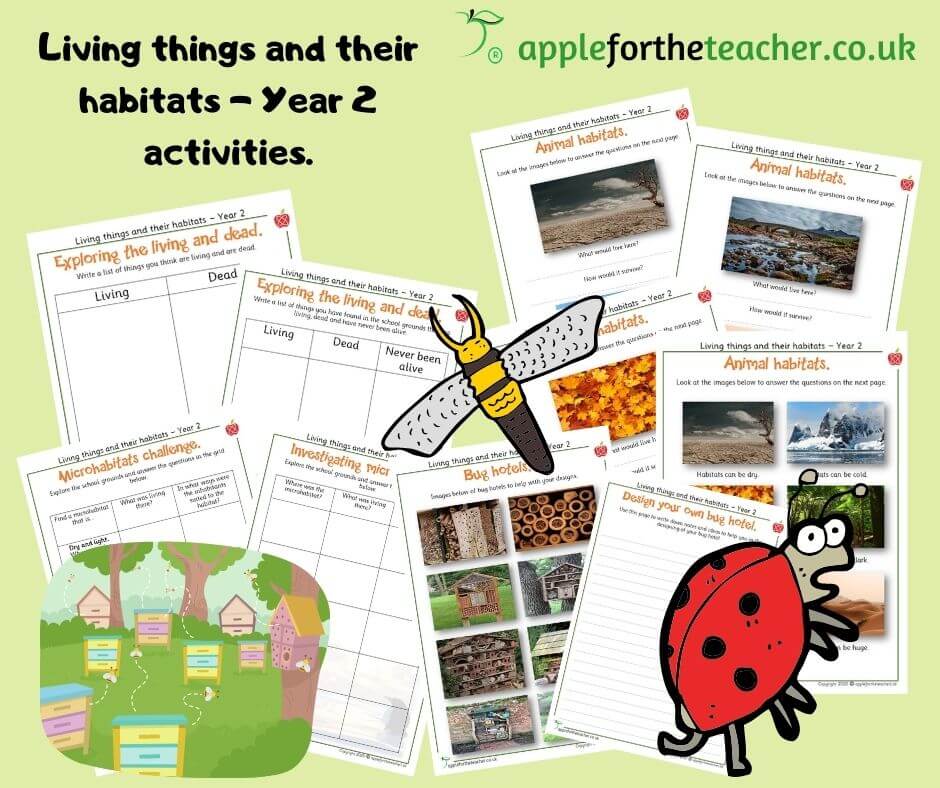
This brilliant unit pack includes all the lesson packs and home learning resources included in the PlanIt Science unit 'Living Things and Their Habitats' for Year 2. In this unit children will learn about a variety of habitats and the plants and animals that live there. They will learn to tell the difference between things that are living, dead and things that have never been alive, and apply.
Living Things and Their Habitats Year 2 Teaching Resources

A brilliant set of 5 PowerPoints which cover Living Things and Their Habitats in year 2. The PowerPoints include Engaging Starters, Lesson Objectives, Key Vocabulary, Literacy and Numeracy, Investigations, Class Discussions and Plenaries.
Year 5 Living Things and their Habitats Grammarsaurus
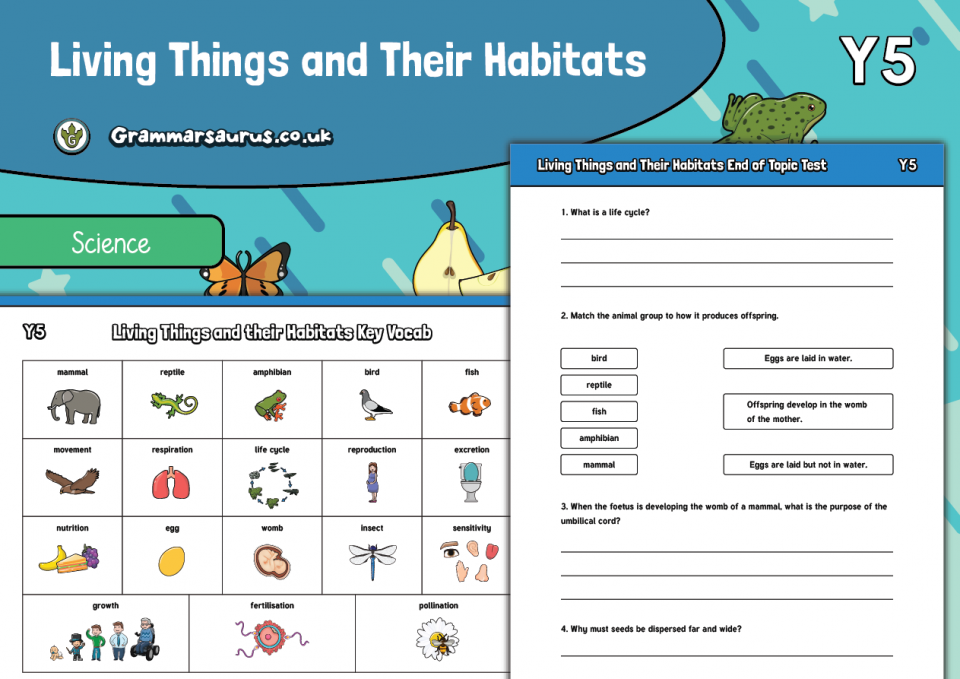
Learn about dead, living and non-living things with this Year 2 Bitesize Science guide.. Part of Science Living things and their habitats Year 2. Save to My Bitesize Remove from My Bitesize.
Year 2 Science Assessment Living Things and Their Habitats Teaching Resources

This end of unit science controlled assessment on living things and their habitats is the perfect resource for testing your students' knowledge of living things and habitats at the end of the module. This resource contains a PDF document with seven pages, four of which contain the questions and three of which contain the answers. The questions in this science controlled assessment are varied.
Year 2 Living Things and their Habitats Grammarsaurus
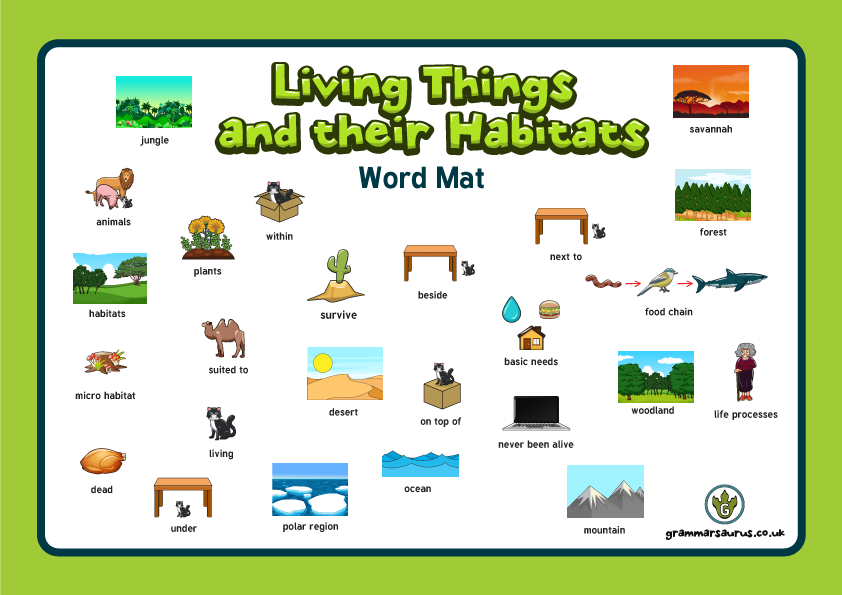
This PlanIt Planning Overview provides a basic outline of the lessons, resources and learning intentions provided in the PlanIt Year 2 Science 'Living Things and Their Habitats' Unit packs. The above video may be from a third-party source. We accept no responsibility for any videos from third-party sources. Please let us know if the video is no.
Habitats primary year 2 display science Class displays, Working wall, Habitats

Identify and name a variety of plants and animals in their habitats, including micro-habitats. Describe how animals obtain their food from plants and other animals, using the idea of a simple food chain, and identify and name different sources of food. Key Stage 1 - Year 1, Year 2 Year 2 Key Stage 1 - Living Things and their Habitats.
animal habitats Animal Species, Bird Species, Amphibians, Mammals, Weedy Sea Dragon, River

Full planning for Year 2 Living Things and their Habitats unit - all mapped to enquiry types and success criteria identifying both substantive and disciplinary knowledge for each lesson. As well as retreival practice every lesson. All editable. Includes: 6 weeks of lessons. Resources/Success Criteria/Assessment/Knowledge Organisers. Lessons as.
Science Living Things and their Habitats Vocabulary Poster Grammarsaurus
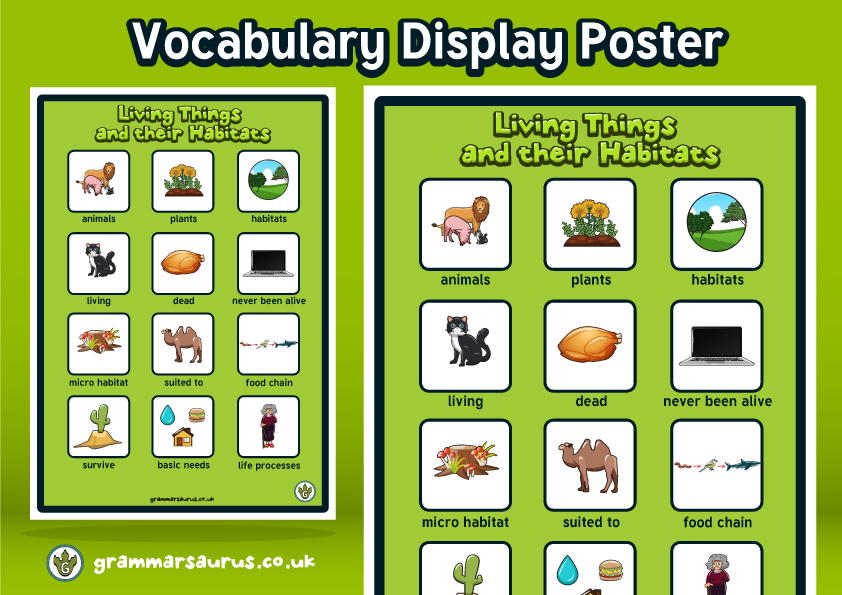
2a1: explore and compare the differences between things that are living, dead, and things that have never been alive. 2a2: identify that most living things live in habitats to which they are suited and describe how different habitats provide for the basic needs of different kinds of animals and plants, and how they depend on each other.
Year 2 Science Living Things and Their Habitats Habitats Around the World Lesson 3
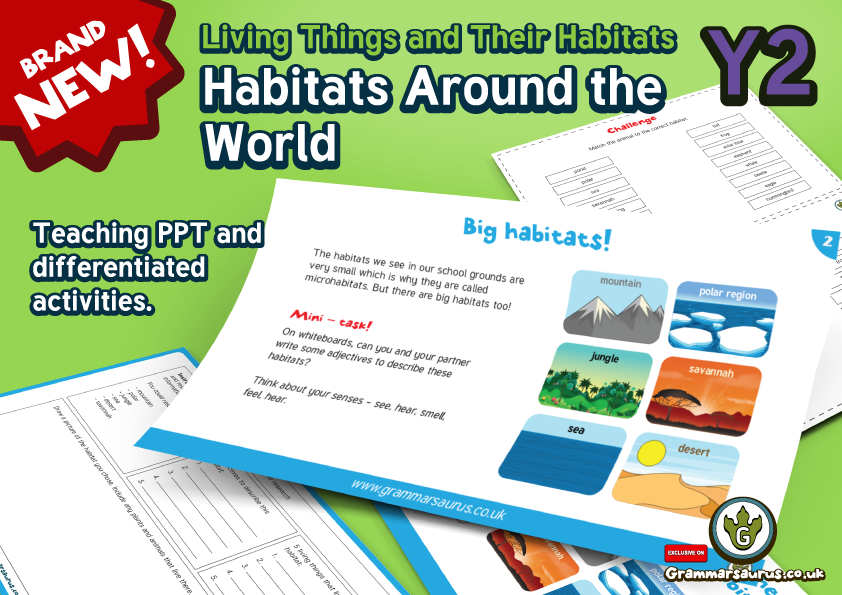
zip, 60.02 MB. Introducing our comprehensive 'Living Things & Their Habitats' unit, designed for Year 2 students and inclusive of 6 detailed lessons. This meticulously crafted unit comes with engaging whiteboard slides, in-depth lesson plans, and an array of supporting resources. The core curriculum revolves around: • Delving into the.
Living things and habitats display year 2. Science display, Classroom displays, School displays

A living organism is an organism that is currently able to carry out all these processes, a dead organism used to perform the processes, but no longer does, an organism that was never alive doesn't carry them out and has never done them. Here's the processes that are integral for all living things: M - Movement - All living things move, even.
KS2 Biology Living Things & Their Habitats Resources For Dyslexics

Year 2: Living things and their habitats . This list consists of lesson plans, activities and video clips to support the teaching of living things and their habitats at Year Two. It contains tips on using the resources, suggestions for further use and background subject knowledge. Possible misconceptions are highlighted so that teachers may.
Year 2 Science Living Things and their Habitats Is it living, dead or never been alive
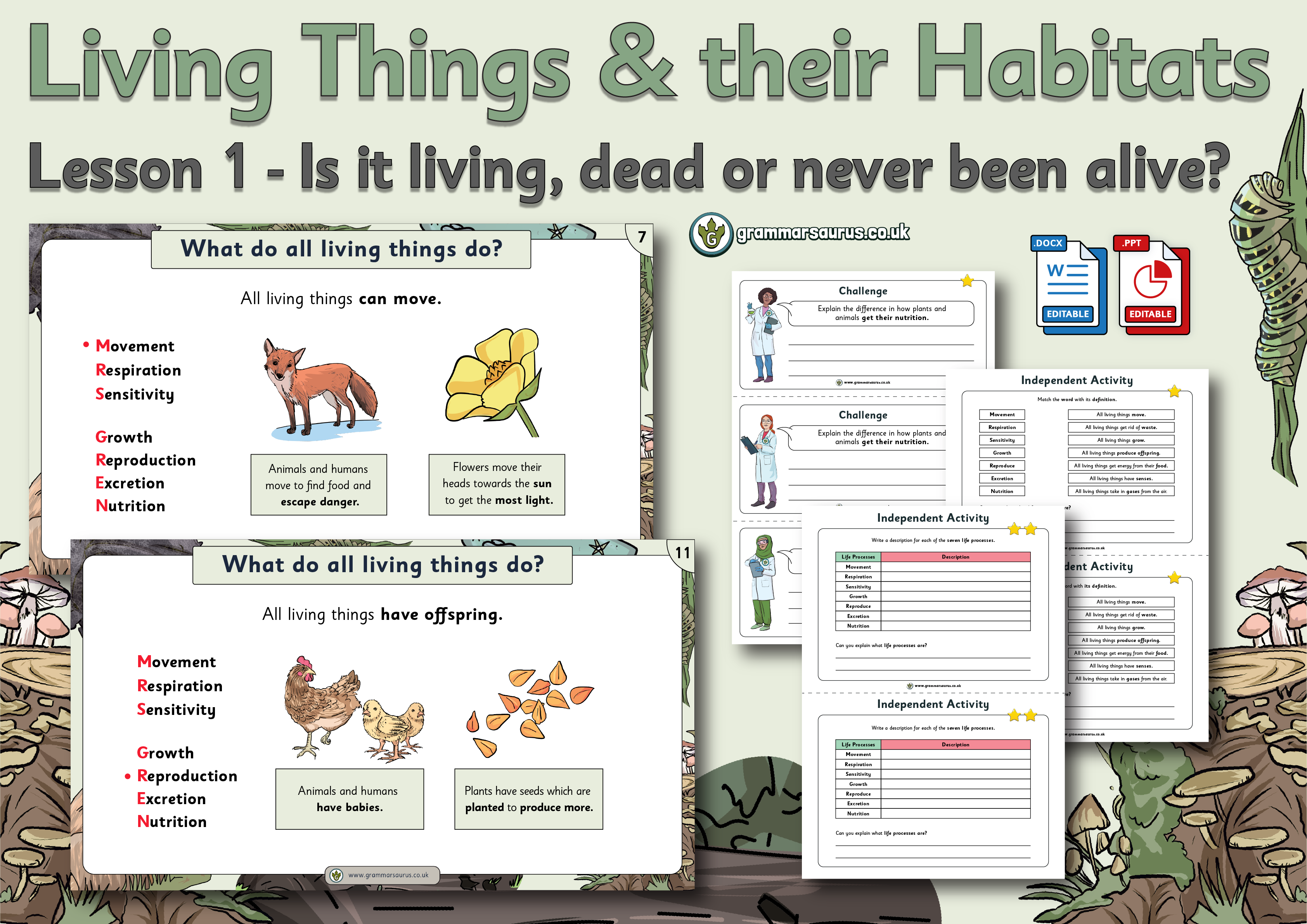
This brilliant unit pack includes all the lesson packs and home learning resources included in the PlanIt Science unit 'Living Things and Their Habitats' for Year 2. In this unit children will learn about a variety of habitats and the plants and animals that live there. They will learn to tell the difference between things that are living, dead and things that have never been alive, and apply.
17 Best images about Year 2 Living Things and their Habitats lesson plans, worksheets and

First, your pupils will learn about the characteristics of typical British habitats. Using these practical activities, your pupils will go on to identify different animals and plants that they observe in various local habitats. This great local habitats resource contains fact sheets full of fun information that will support further learning.Also included are informative glossaries, educational.